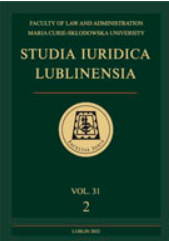Investigating the Position of Customs District Chief in the Kingdom of Poland in the Early 1850s
Investigating the Position of Customs District Chief in the Kingdom of Poland in the Early 1850s
Author(s): Krzysztof LatawiecSubject(s): Political history, Government/Political systems, 19th Century
Published by: Wydawnictwo Naukowe Uniwersytetu Marii Curie-Sklodowskiej
Keywords: Kingdom of Poland; Russian Empire; customs administration; clerk;
Summary/Abstract: The way in which customs district chiefs functioned in the Kingdom of Poland in the early 1850 has not received much attention so far, either among traditional historians or researchers of administrative structures. The position of customs district chief was one of the most important posts in the customs administration of the Russian Empire. Clerks employed on this position were supervisors of institutions and structures of border guards operating on the border of the Romanov monarchy. Customs district chief would execute all the orders from the Foreign Trade Department of the Ministry of Finance as well as from other central administrative structures of the Russian state at that time. The present article took under close scrutiny archival and printed sources to arrive at the delineation of competences of customs district chiefs as introduced in the Kingdom of Poland in January 1851. Their rights and obligations, even though specified by a separate customs act prepared for the Kingdom of Poland, were identical with competences of clerks of the same kind operating in other parts of the Russian Empire. The findings of the study largely expand the state of knowledge on the operation of Russian administrative structures in the second half of the 19th century in the Kingdom of Poland, one of the provinces of the Romanov absolute monarchy.
Journal: Studia Iuridica Lublinensia
- Issue Year: 31/2022
- Issue No: 2
- Page Range: 145-167
- Page Count: 23
- Language: English

